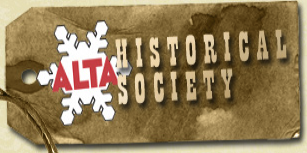Montgomery “Monty” Atwater is among those legends most revered in books dealing with the subject of snow safety. Monty, as he was known, was born in Baker City, Oregon in 1904. His first significant exposure to skiing did not occur until the early 1940s when he joined the famous 10th Mountain Division. There he was taught the fundamentals of skiing and became well versed in the use of explosives. He ended up going to Northern Europe during World War II and was seriously wounded in the Kiska invasion.
Following his return to the U.S. and subsequent recovery, he became good friends with Sverre Engen, who he had first met while going through basic military training at Camp Hale in Colorado. Engen encouraged Atwater to come to Utah and he accepted the suggestion by going to work for the Forest Service. His first assignment landed him at Alta and he immersed himself in the study of avalanche control which was still in its infancy. When Sverre Engen took over the ski school responsibilities at Alta in the mid 1940s, Atwater took over the Snow Ranger duties, a position he held until he left Alta in 1959.
During the years Atwater was at Alta, he continued his research on snow safety procedures and became well known, world wide, as an authority on avalanche control. Atwater had, in earlier years, received a degree in English literature from M.I.T. He used his writing skills to author a book titled Avalanche Handbook which literally became the “bible” for Forest Service personnel and others involved in the snow safety profession.
In 1960, Atwater became Avalanche Control Chief for the 1960 Winter Olympic Games held at Squaw Valley, California. Following the Olympics, he remained at Squaw Valley as an Avalanche Control Specialist, developing innovations such as the “Avalancher,” still in use today by professionals in snow safety. In 1973, Atwater was honored by the Forest Service, the National Park Service, and the National Ski Patrol by being named the “Father of Snow Avalanche Work in the United States.”
Atwater passed away in 1976 and was inducted posthumously to the U.S. National Ski Hall of Fame in 1978.

